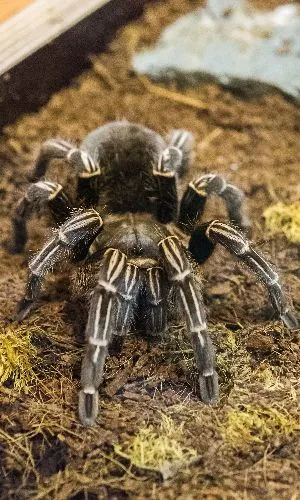The Stripe Knee Tarantula (Aphonopelma seemanni) is a captivating invertebrate, popular among tarantula enthusiasts for its striking black and white striped legs and relatively docile temperament. However, like any pet, it requires dedicated care to thrive. This comprehensive guide provides all the information you need to successfully raise a Stripe Knee Tarantula, covering everything from choosing your spider to addressing potential health issues. Proper care ensures your tarantula lives a long, healthy, and fulfilling life, providing you with years of enjoyment.
Choosing Your Stripe Knee Tarantula
Selecting a healthy Stripe Knee Tarantula is the first step in ensuring its well-being. Careful consideration of the source and the spider’s physical condition is crucial. Avoid impulsive purchases and instead, focus on acquiring a tarantula from a reputable source. Doing so will increase the chances of obtaining a healthy specimen and receiving valuable advice and support.
Where to Buy Your Tarantula
The best sources for acquiring a Stripe Knee Tarantula include specialized pet stores, reputable breeders, and online marketplaces dedicated to exotic pets. Researching these sources beforehand is essential. Look for vendors with positive reviews, transparent practices, and a demonstrated commitment to animal welfare. Avoid purchasing from sources that appear to prioritize profit over the health of their animals. Local reptile and exotic pet shows can also be excellent places to find healthy tarantulas and connect with experienced keepers.
Choosing a Healthy Tarantula

When selecting a Stripe Knee Tarantula, examine its physical condition carefully. A healthy tarantula should have a plump abdomen, indicating it is well-fed and hydrated. The legs should be intact and move freely. Look for a spider that is alert and responsive to its environment. Avoid tarantulas that appear lethargic, have a shrunken abdomen, or show signs of injury, such as missing limbs or visible wounds. Check for any unusual behaviors or deformities. A healthy tarantula will also have a clean enclosure.
Setting Up the Perfect Enclosure
Creating a suitable enclosure is fundamental to the health and happiness of your Stripe Knee Tarantula. The enclosure should provide a safe and comfortable environment, mimicking the spider’s natural habitat as closely as possible. This includes appropriate size, substrate, decor, and environmental conditions. The right setup will minimize stress and encourage natural behaviors, contributing to the tarantula’s overall well-being.
Enclosure Size and Type
The size of the enclosure should be proportional to the size of your tarantula. A good rule of thumb is to provide an enclosure that is at least three times the tarantula’s leg span in width and length. For a juvenile Stripe Knee Tarantula, a 5-gallon aquarium or a similar-sized plastic terrarium is suitable. As the tarantula grows, upgrade to a larger enclosure, such as a 10-gallon or 20-gallon tank. Ventilation is essential; ensure the enclosure has adequate airflow to prevent the buildup of moisture and mold. Secure lids are also vital to prevent escape.
Substrate Selection
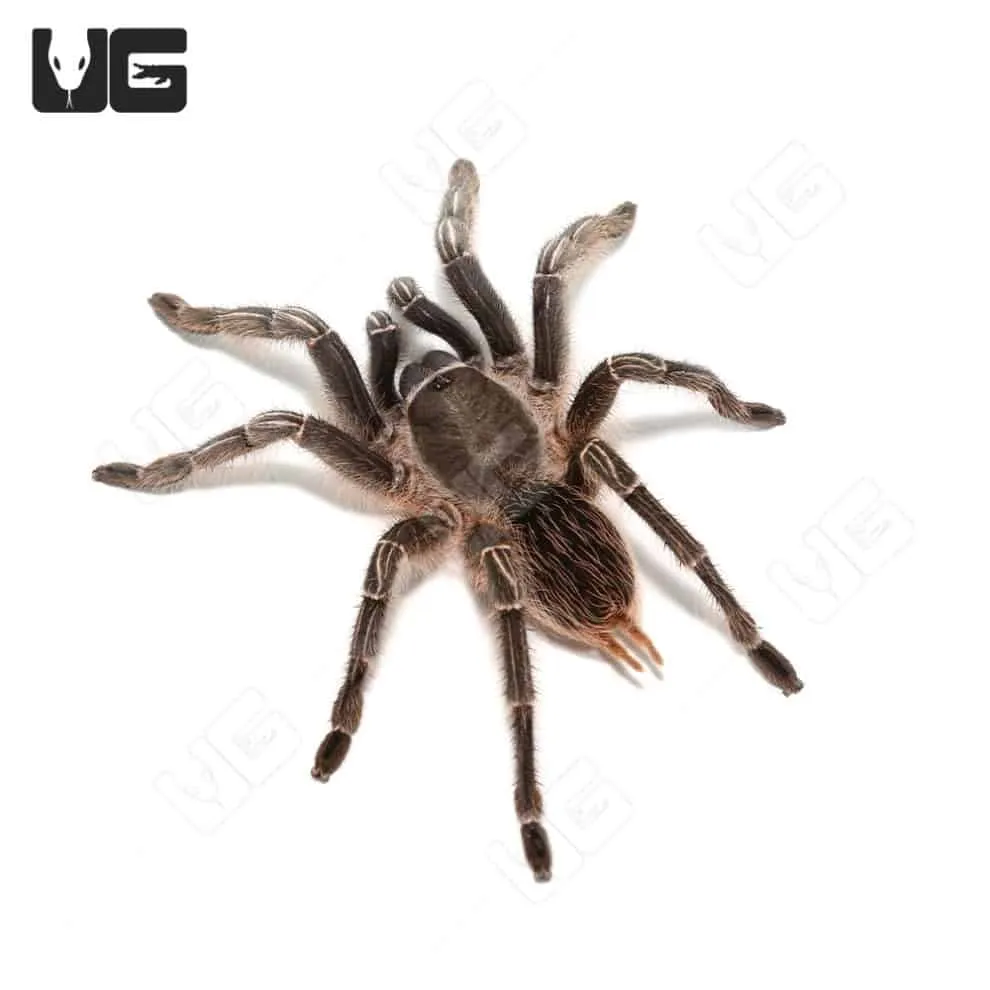
The substrate is the material that lines the bottom of the enclosure and serves as a bedding for the tarantula. The best substrate for a Stripe Knee Tarantula is a mixture that retains moisture and allows the spider to burrow if it chooses. A good combination includes: Coco fiber, which retains moisture and is readily available. Sphagnum moss, which helps retain humidity. A layer of substrate at least 4-6 inches deep is recommended to allow for burrowing. Avoid substrates that are toxic or have sharp edges, and regularly check and replace the substrate to maintain hygiene.
Decorating the Enclosure
Provide your Stripe Knee Tarantula with enrichment by decorating its enclosure. This adds visual interest and provides opportunities for the tarantula to express natural behaviors. Include: Hides such as cork bark, half logs, or artificial hides, which provide shelter and security. Live or artificial plants, which can help maintain humidity and provide visual interest. Avoid anything that can trap the tarantula or pose a threat. Ensure all decorations are clean and free of pesticides.
Maintaining the Right Temperature and Humidity
Stripe Knee Tarantulas thrive in a specific range of temperature and humidity. Maintaining these conditions is crucial for their health and molting process. The ideal temperature range is between 75-85°F (24-29°C). Use a heat mat or a low-wattage heat lamp to maintain the desired temperature. Humidity should be maintained at 60-70%. Use a hygrometer to measure humidity levels. Mist the enclosure lightly with dechlorinated water a few times a week to maintain humidity levels. Proper ventilation is essential to prevent mold growth.
Feeding Your Stripe Knee Tarantula

Providing a proper diet is crucial for the health and growth of your Stripe Knee Tarantula. Their diet in the wild usually consists of insects. Therefore, their diet in captivity should replicate this as closely as possible, providing essential nutrients for the tarantula’s development. A varied diet will ensure the tarantula gets all the necessary vitamins and minerals. It is also important to understand the frequency of feeding and how much to feed.
What to Feed Your Tarantula
The primary diet for a Stripe Knee Tarantula should consist of insects. Suitable feeder insects include: Crickets, which are readily available and a good source of protein. Dubia roaches, which are nutritious and easy to breed. Mealworms, which are convenient but should be offered in moderation due to their lower nutritional value. Always ensure that feeder insects are gut-loaded before feeding them to your tarantula. Gut-loading means feeding the insects a nutritious diet, which transfers the nutrients to your tarantula. Avoid feeding wild-caught insects, as they may carry parasites or pesticides.
Feeding Frequency
The feeding frequency depends on the age and size of your tarantula. As a general guideline: Spiderlings (small juveniles) should be fed 2-3 times a week. Juvenile tarantulas can be fed once or twice a week. Adults can be fed every 1-2 weeks. Adjust the feeding schedule based on your tarantula’s appetite and abdomen size. A healthy tarantula will have a plump abdomen. If the abdomen appears too small, increase feeding frequency. If the abdomen appears excessively large, decrease feeding frequency.
Watering and Hydration
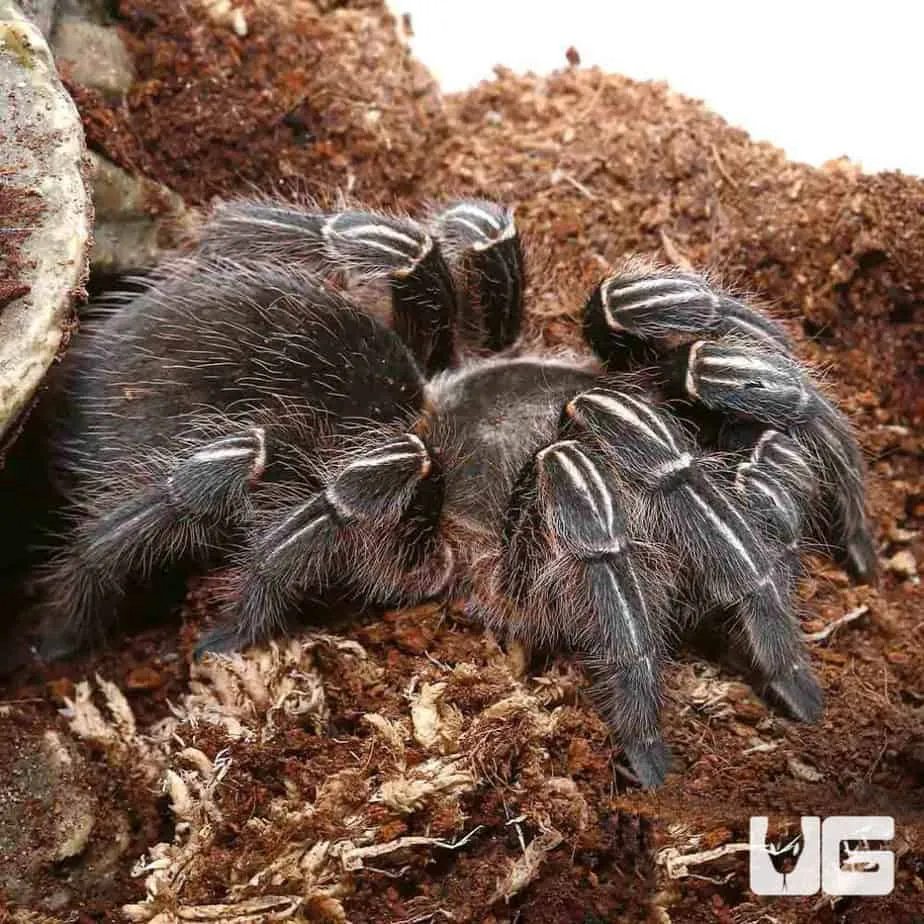
Water is essential for a Stripe Knee Tarantula’s survival and overall well-being. Provide a constant source of clean water to ensure proper hydration. Options for providing water include: A shallow water dish filled with fresh, dechlorinated water. Use a water dish that is shallow enough to prevent drowning. A water dish is a safe option and keeps your tarantula hydrated. Alternatively, mist the enclosure lightly with dechlorinated water a few times a week. Ensure the substrate is slightly damp to maintain humidity. Regularly check the water dish and refill it with fresh water to prevent the growth of bacteria and algae.
Handling and Interaction
While Stripe Knee Tarantulas are relatively docile, handling should be approached with caution. Tarantulas are fragile creatures, and mishandling can lead to injury or stress. Understanding the risks and practicing safe handling practices are essential for the well-being of both you and your tarantula. It’s always better to observe the tarantula within its enclosure and interact through feeding and enclosure maintenance.
Is Handling Necessary
Handling is generally unnecessary for Stripe Knee Tarantulas. They are not social creatures and do not require interaction. In fact, handling can be stressful for the tarantula and may increase the risk of dropping or injury. Prioritize creating a comfortable and enriching environment within the enclosure. Focus on observing your tarantula’s behavior, feeding it properly, and maintaining its habitat.
Safe Handling Practices
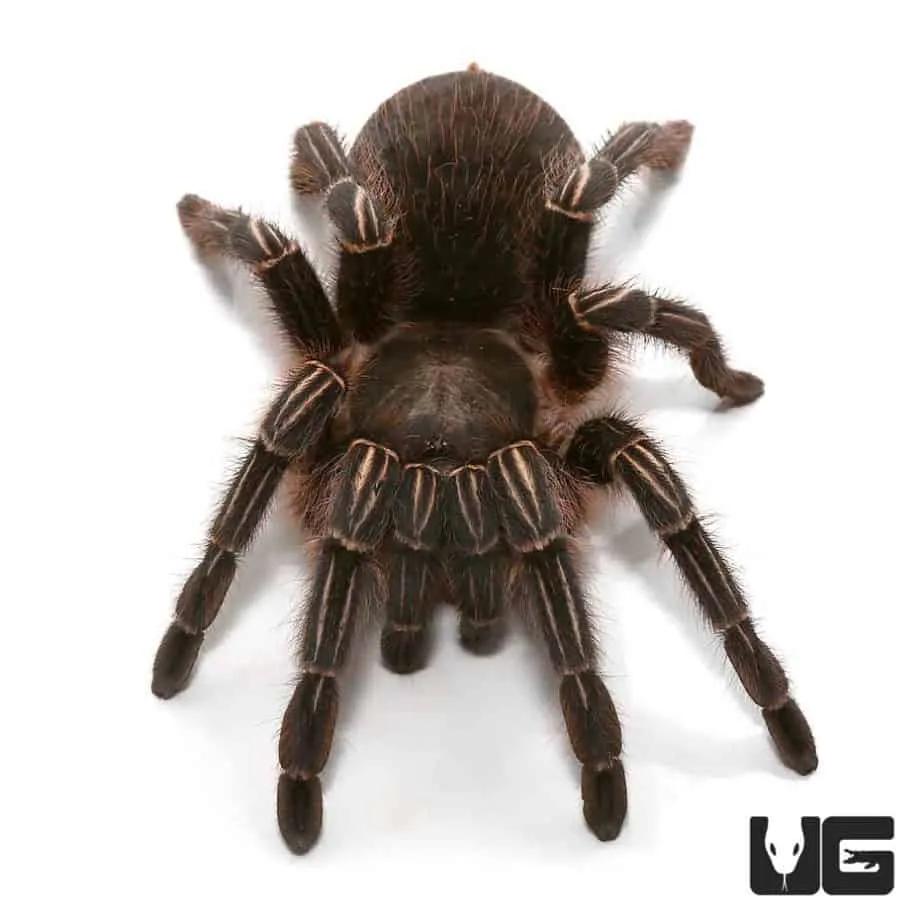
If you choose to handle your Stripe Knee Tarantula, do so with extreme care and caution. Always handle the tarantula over a soft surface, such as a bed or a carpet, in case it falls. Gently scoop the tarantula into your hand, avoiding sudden movements. Never squeeze or apply pressure to the tarantula’s body. Be aware that the tarantula may flick urticating hairs as a defense mechanism. Wash your hands thoroughly after handling the tarantula. If bitten, seek medical attention, although bites are rarely life-threatening.
Identifying Potential Health Issues
Monitoring your Stripe Knee Tarantula for potential health issues is crucial. Recognizing the signs of illness early allows you to take appropriate action and provide the necessary care. Regular observation, combined with a good understanding of common tarantula health problems, will help you ensure your pet’s well-being. Early detection and prompt treatment can make a significant difference in the spider’s health and longevity.
Recognizing Signs of Illness
Several signs may indicate that your Stripe Knee Tarantula is unwell. If you notice any of these signs, it is important to investigate further. Some indicators include: Lethargy or inactivity, a tarantula that is less active than usual might be ill. Loss of appetite, a tarantula that refuses to eat may be sick. Abnormal posture, such as difficulty standing or unusual positioning. Lack of coordination, a tarantula that appears uncoordinated may have a neurological problem. Parasites, mites, or other external issues. If you notice any of these signs, consult a veterinarian or an experienced tarantula keeper for advice.
Common Health Problems
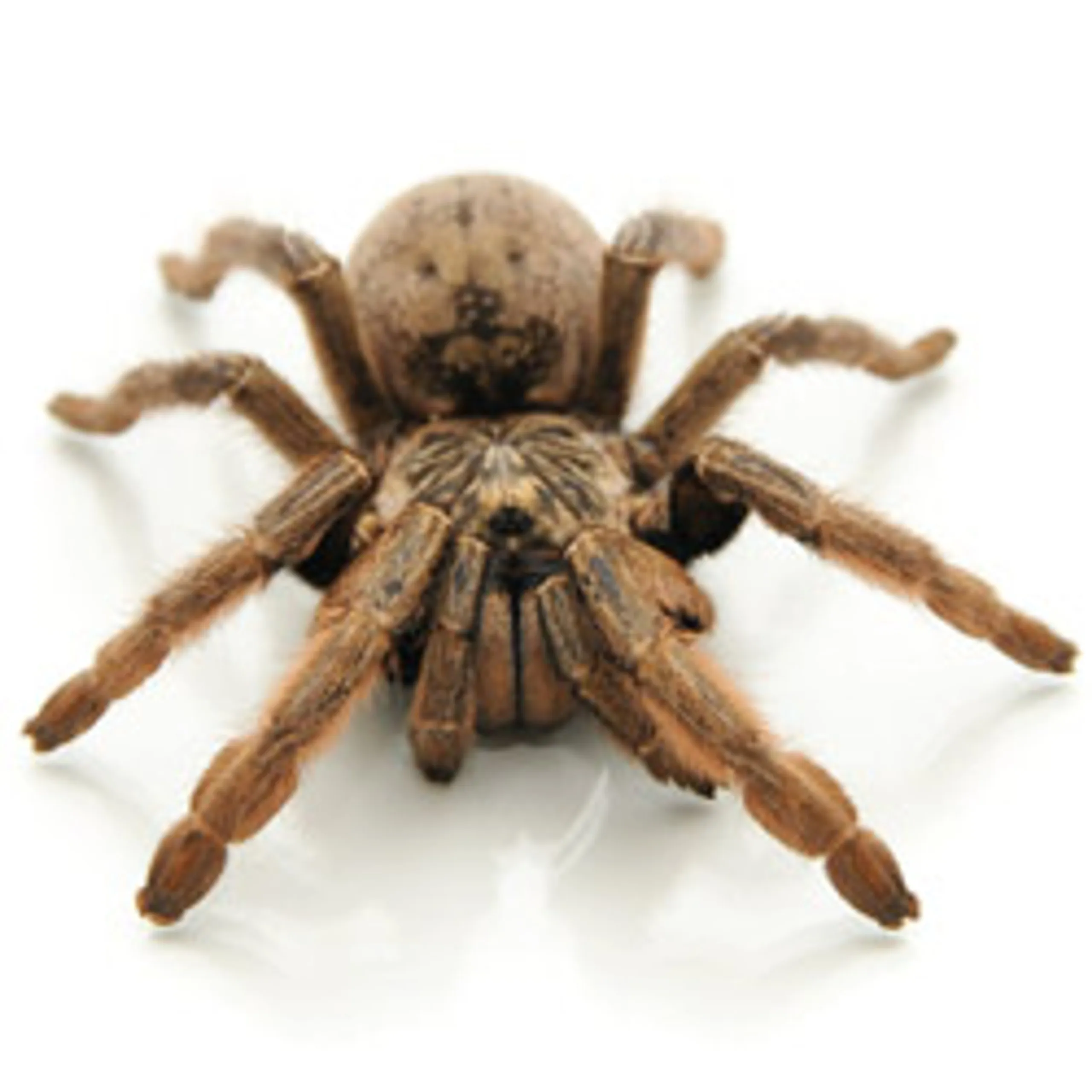
Stripe Knee Tarantulas, like any pet, are susceptible to certain health problems. Knowing these potential issues helps you prevent them and respond effectively if they arise. Common problems include: Parasites such as mites, which can infest the tarantula and cause irritation. Dehydration, due to inadequate water intake or low humidity. Infections, which can occur if the enclosure is not kept clean. Molting problems, which may occur if the enclosure conditions are not ideal. If you suspect your tarantula is ill, seek advice from an experienced keeper.
In conclusion, raising a Stripe Knee Tarantula can be a rewarding experience. By following this guide, you’ll be well-equipped to provide your pet with the care it needs to thrive. Remember that patience, observation, and a commitment to learning are key to success. Enjoy the journey of caring for this fascinating creature!
